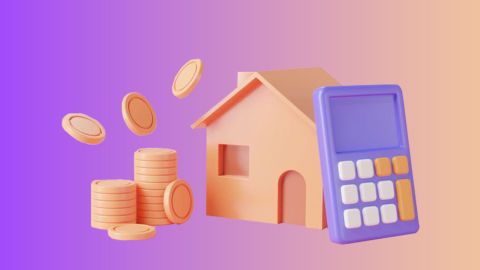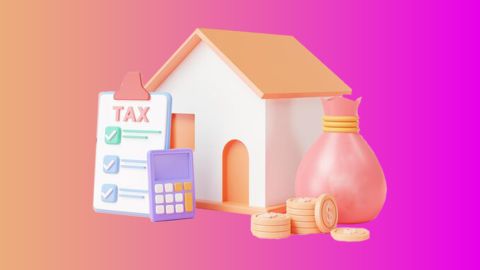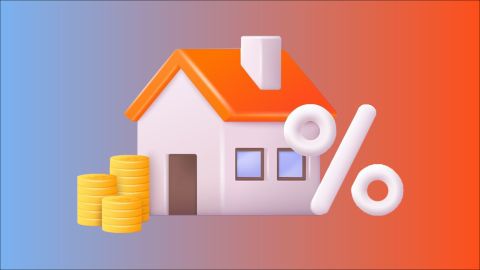When you sell an asset (other than a residential house) and use the full sale amount to buy or build a new home, you can claim a tax exemption under Section 54F of the Income Tax Act. This section is designed to support investment in housing while offering relief on long-term capital gains tax. In a recent decision, the Income Tax Appellate Tribunal (ITAT) Delhi ruled that taxpayers can claim multiple-year exemptions under Section 54F for an under-construction property. It clarified that investing capital gains more than once towards the same house can still qualify for the benefit.
In this article, we will walk you through the meaning of Section 54F, the exemption available under Section 54F, and the method to calculate benefits under Section 54F of the Income Tax Act.
Eligibility to claim exemption under Section 54F
Section 54F offers tax exemption on profits earned from selling any asset other than a residential property, provided certain conditions are met:
- The seller must reinvest the total sale proceeds into a new residential house.
- The new home must be:
- Bought: within 1 year before or 2 years after selling the original asset, or
- Built: within 3 years from the date of sale.
- On the date of selling the original asset, the taxpayer should not own more than one residential property, apart from the one they are investing in.
- No other residential house should be purchased within 2 years or constructed within 3 years from the sale date.
If these rules are not followed, the exemption claimed earlier becomes taxable in the year when a second property is bought or built. Also, from 1st April 2024, the maximum deduction allowed under Section 54F is limited to Rs.10 crore.
How to calculate exemption u/s 54F?
To find out how much exemption you can claim under Section 54F, you need to look at how much of your sale money has been used to buy a new residential property. There is a simple formula to work this out:
54F Exemption = (Capital Gains × Amount invested in new house) ÷ Net Sale Price
Let us understand this better with an example.
Note:
From 01 April 2024, there’s a new rule for those claiming exemption under Section 54F. If you invest more than Rs. 10 crore in buying a new residential house, the exemption amount will still be limited to Rs. 10 crore. So even if your investment is higher, the Income Tax Department will consider only up to Rs. 10 crore while calculating the exemption.
Example
Imagine Mr. Das sells his land to Mr. Singh on 14 August 2024 for Rs. 5 crore. Mr. Das had originally bought this land back in June 2020 for Rs. 50 lakh. After selling the land, he used Rs. 3 crore to buy a new residential property in August 2025. Also, Mr. Das did not own any house on the date he sold the land.
Since Mr. Das held the land for more than two years, it is treated as a long-term capital asset. This allows him to use indexation to adjust his purchase cost.
He can claim exemption under Section 54F because:
- He sold a long-term capital asset that was not a residential house.
- He did not own any other residential property when he made the sale.
- He bought a new house within two years using the sale money.
Here is how capital gains are calculated
Particulars |
Amount (Rs.) |
Sale price |
5,00,00,000 |
Indexed cost of purchase (50,00,000 × 363 ÷ 301) |
60,20,900 |
Long-term capital gains |
4,39,70,099 |
Exempt capital gains (4,39,70,099 × 3,00,00,000 ÷ 5,00,00,000) |
2,63,82,060 |
Taxable capital gains |
1,75,88,039 |
Since the exemption limit is up to Rs. 10 crore, Mr. Das can claim the full exemption that he is eligible for in this case.
Planning to purchase a new residential property to claim Section 54F benefits? Bajaj Housing Finance Home Loan offers competitive interest rates and substantial loan amounts. Check your eligibility now. You may already qualify, find out by entering your mobile number and OTP.
Differences Between Section 54 and 54F
Although Section 54 and Section 54F both offer capital gains tax exemption benefits, they apply to different types of assets and come with distinct rules. Here’s a detailed comparison of the two sections:
Basis of difference |
Section 54 |
Section 54F |
Type of asset sold |
This exemption is available only if the asset sold is a residential house. |
This exemption applies if you sell any capital asset except a residential property (e.g., land, gold, shares). |
How exemption is calculated |
The full amount invested in the new residential house can be claimed as exemption. |
The exemption is based on the proportion of the sale amount reinvested in the new property. |
Number of properties allowed |
You can invest in two houses and still claim the exemption once, provided the capital gain is within Rs. 2 crore. |
This section doesn’t allow the option to invest in two properties – only one is permitted. |
Maximum exemption limit |
The upper limit on exemption is Rs. 10 crore. |
The exemption is also capped at Rs. 10 crore, even if the investment is more. |
Understanding these differences can help you choose the right section to claim benefits when reinvesting your capital gains.Looking to invest in residential property for tax benefits? Bajaj Housing Finance Home Loan provides approval within 48 hours* and flexible tenures of up to 32 years. Check your loan offers today. You may already be eligible, find out by entering your mobile number and OTP.






